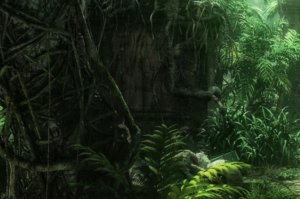When my debut novel, Sleeper Protocol, was released in 2016, many of my childhood friends, family, and even my teachers commented about my use of “home.” Where I call home is a long way from where I live now, but every time I’m there the feeling of peace is as palpable as wrapping a blanket around my shoulders. I was born and raised in upper east Tennessee in an area called the Tri-Cities. My family actually lived very near a small community known as Midway – it was Midway between Johnson City and Tennessee’s Oldest City, Jonesborough. The Appalachian mountains filled the eastern horizon, running in a roughly southwest to northeast line. It’s a beautiful place.
And I never intended for my story to go there.
As the story of a cloned soldier trying to find his identity unwound from my brain to the keyboard, I initially struggled with “What’s the point?” or even Eric Flint’s famous guidance of “Who gives a $^#@?” I needed something to make the character’s emotional struggle hit home and that’s where the inspiration hit. So, I took my character home. In the third act, he descends Cherokee Mountain, crosses the Nolichucky River, and ends up on a small knoll where a farmhouse once stood. All of those are real places and the knoll is where my family’s homestead still stands. My cousins own “The Farm” as we call it, and it’s wonderful to know that it’s still there and open for my family to visit any time we want. That openness and warmth led me to bringing my character to an very different emotional level. I gave him a sense of place, a sense of a home that he’d once had and was very different than the future one, but a place he could identify with fully and embrace his identity. Once I’d opened that door, I proceeded to move him further along the path by having him stand over his own gravesite in the Mountain Home National Cemetery.
The journey to find his “home” was really the key to unlocking his identity. My first ideas to bring him through familiar territory to help with my description and emotional resonance gave way to something else entirely: a theme I’d never intended. Our sense of home is a large part pf our identity. Even our home nation, or state, or municipality is much more than a common bond to our neighbors. We identify ourselves to that place forever. No matter where I go, when I am asked where I’m from I always say that I’m from Tennessee and just happen to live elsewhere.
My point is this – write about your home or wherever you consider your home to be. Pull that emotion and identity into your own writing. Your voice will improve, your characters will seem more grounded and real, and your readers – especially those who claim the same sense of home – will keep asking for more. When you’re not writing about your home? Put that same warmth and emotion into the characters who are there. It makes a difference to the story and to your characters.




 Since the month seems to be focusing on the food aspects of writing, I thought I’d be trendy and go in the organic direction. When I think of organic or whole foods, I think of simple, the way nature intended, unadulterated ingredients. In relation to characterization, I think of characters with a rich and unique background, not created to fit the story, but naturally emerging from their setting, lifestyle, and experiences. Many of my readers tell me that’s my special sauce, that my characters are unique and distinctive from one another. How did that become my strength? I’m not sure, but here are a few ideas.
Since the month seems to be focusing on the food aspects of writing, I thought I’d be trendy and go in the organic direction. When I think of organic or whole foods, I think of simple, the way nature intended, unadulterated ingredients. In relation to characterization, I think of characters with a rich and unique background, not created to fit the story, but naturally emerging from their setting, lifestyle, and experiences. Many of my readers tell me that’s my special sauce, that my characters are unique and distinctive from one another. How did that become my strength? I’m not sure, but here are a few ideas.